Central Line-associated Blood Stream Infection (CLABSI)
|
This is a preventable Hospital-Acquired Infection (HAI) that sometimes occurs in patients when germs (usually bacteria, fungus or mold) enter the bloodstream through the central line. The standardized infection ratio (SIR) is a summary statistic that can be used to track HAI prevention progress over time; lower SIRs are better. A SIR is calculated by the number of observed cases divided by an expected number of cases in a time period.
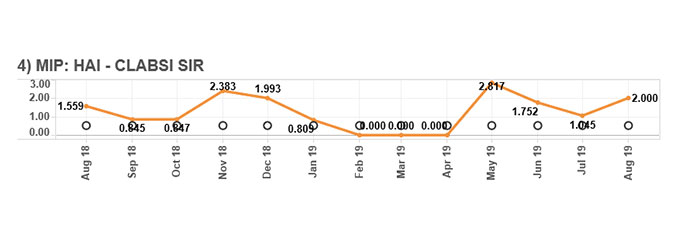
|
CAUTI
|
This is a mostly preventable Hospital-Acquired Infection (HAI) that sometimes occurs when germs (usually bacteria) enter the urinary tract through the urinary catheter and cause infection. The rate is calculated by the number of cases in a time period divided by 1000 urinary catheter days. A lower number is better. In July 2014, we started tracking CAUTI rates house-wide (not only for ICU as was tracked previously). For consistency of data, CAUTI rates begin then.
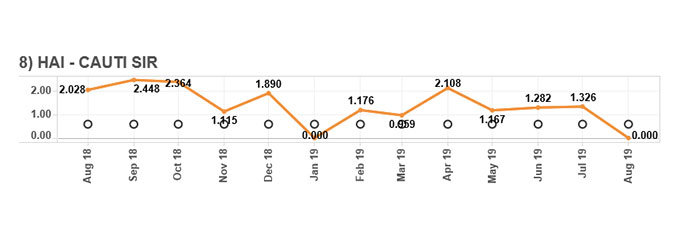
|
C‐Diff
|
This is a preventable Hospital-Acquired Infection (HAI) that sometimes occurs when this specific bacteria is spread through insufficient disinfection of hands and surfaces and/or the prolonged use of some antibiotics. The rate is calculated housewide (excludes NICU) by the number of cases in a time period divided by 1000 patient days. A lower number is better.

|
C‐Section
|
This rate is the number of C-sections vs. the total number of total deliveries during that period. For this metric, it must be the mother’s first delivery and the baby must be to term, a singleton and in a vertex position. The 2014 National Rate was .325 or 32.5 percent.
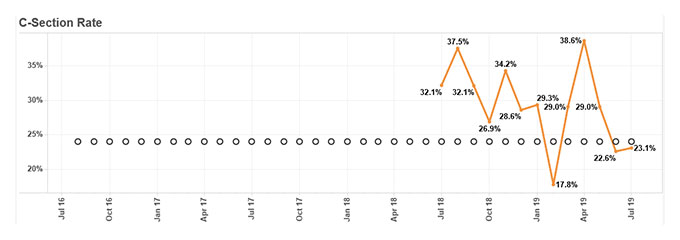
|
Early Elective Delivery Rate
|
This rate is the number of elective deliveries (vaginal and C-section) that occurred for women between 37 and 39 weeks of gestation vs. the total number of deliveries during that period, excluding justifiable criteria as defined by CMS. The 2014 National Rate was .05 or 5 percent.
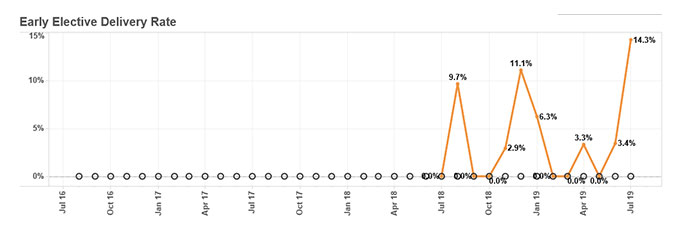
|
Hand Hygiene Compliance
|
The percent of Press Ganey surveys received with Top Box answers for the perception of hand hygiene. Due to the timing of surveys, the date filter is applied to the date the surveys were received for this metric. The goal is 75.9%. 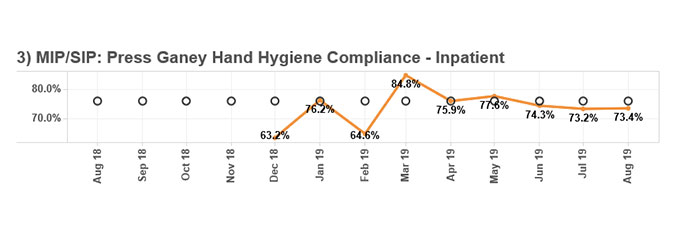
|
Serious Safety Event Rate
|
A serious safety event (SSE) is one where there is a deviation in generally accepted performance standards (GAPS) that results in harm to a patient. Our rate is calculated housewide (excludes NICU) by the number of events that occur divided by 10,000 patient days and is a rolling 12-month average. A lower number is better.

|